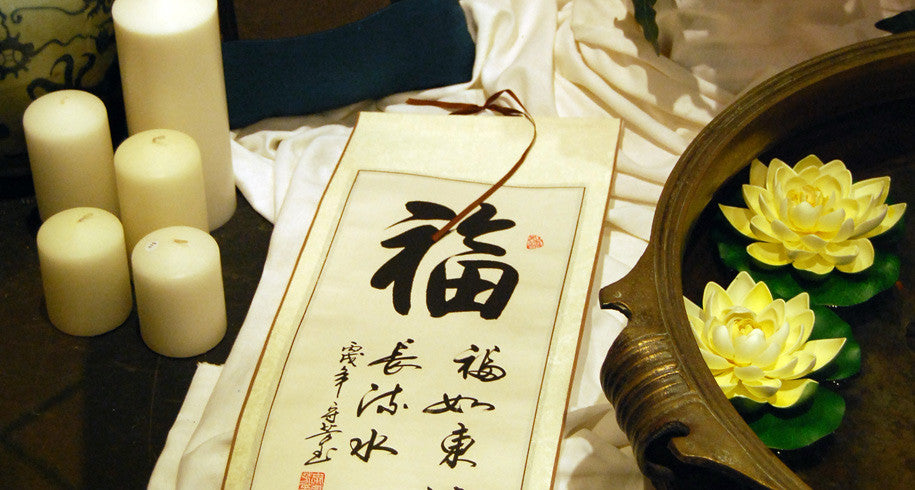Your Cart is Empty
Free Shipping for orders over $49 in Australia, $199 IN NEW ZEALAND/USA/CANADA AND $249 REST OF THE WORLD
Free Shipping for orders over $49 in Australia, $199 IN NEW ZEALAND/USA/CANADA AND $249 REST OF THE WORLD
Add description, images, menus and links to your mega menu
A column with no settings can be used as a spacer
Link to your collections, sales and even external links
Add up to five columns
Add description, images, menus and links to your mega menu
A column with no settings can be used as a spacer
Link to your collections, sales and even external links
Add up to five columns
The Swastika - Ancient Symbol of Peace, Law and Abundance
by Linda Heaphy May 02, 2017

Swastika from Roman mosaic 2nd Century CE. Sousse, Tunisia
Photo credit: Mathiasrex
The swastika is one of humankind's oldest known symbols. It has the form of an equilateral cross with its arms bent at right angles, in either right-facing form or its left-facing mirror form. It is believed to have originally arose as a repeating design created by reed edges in the basket-weave designs of early Neolithic cultures around 11000 years ago, and has appeared in the motifs of many civilisations over the past 5000 years, representing perpetual motion (Ancient Greeks), law and order (Romans), the sun disk (ancient Egyptians and Bronze Age Europeans), the Christian cross and the Nordic thunder hammer.

Cultural use of the swastika around the world.
Photo credit: World Scouting Museum
The word swastika comes from the Sanscrit words su (good) and asati (to exist) which together mean "may good prevail." To this day the swastika is a particularly holy symbol of the Hindu, Buddhist and Jain religions, symbolising happiness, good luck, auspiciousness, harmony and balance. It is also widely used by Native American tribes; to the Navajo it is associated with the whirling log, a sacred image used in healing rituals; to the Hopi it represents the wandering Hopi clans.

Early 20th century Navajo Whirling Log rug. Photo credit: Fishal
Because of its importance to Native Americans, the swastika also became important within the American Boy Scout movement as a symbol of nobility:
"… as you know from the account of the Swastika Thanks Badge which I have given to you in Scouting for Boys, the symbol was used in almost every part of the world in ancient days and therefore has various meanings given to it.
Anyway, whatever the origin was, the Swastika now stands for the badge of fellowship among Scouts all over the world, and when anyone has done a kindness to a Scout it is their privilege to present him or her with this token of their gratitude, which makes him a sort of member of the Brotherhood, and entitles him to the help of any other Scout at any time and at any place.
I want specially to remind Scouts to keep their eyes open and never fail to spot anyone wearing this badge. It is their duty then to go up to such a person, make the scout sign, and ask if they can be of service to the wearer."
Robert Baden-Powell, What Scouts Can Do - More Yarns, 1921

Plaque, the Boy Scout Association, circa 1920. Photo credit:
World Scouting Museum
The swastika's appropriation by the German National Socialists (popularly known as the Nazi Party) after 1918 as party emblem, and its subsequent adoption as the German National flag during the time of the Third Reich (albeit coloured black and rotated 90 degrees), unfortunately stigmatised it in the eyes of the world, and its continued use within Asian cultures may sometimes lead to confusion, particularly in Europe. However, it may be hoped that in time the overall nobility of this emblem will override the stain of its historically brief association with German Nationalism.
References and Further Reading
Murray, Craig Swastikas in Scouting. Accessed April 2017
Wikipedia. Swastika. Accessed April 2017
Liked this article? Visit our online store
2 Responses
David
December 12, 2018
Hi Linda,
Very interesting article. My wife Karen and I loved coming to your shop when in Sydney, we don’t go to that part of the world much now.
Regarding the Swastika and its use in “Nazi” Germany. I have recently found out a great deal of miss information regarding this issue. Right off the bat, the political movement formed by Adolf Hitler was never called “Nazis”, this was in fact a derogatory term used by others. Hitler, his movement and the Second World War are probably the most lied about subjects in all history.
Have a look at this below video of a Black American preacher who discovered the truth about the Swastika and why Hitler and his people used it as a symbol in their struggle:
https://youtu.be/xsCR39Za5dY
Leave a comment
Comments will be approved before showing up.
Also in Symbols & Ritual Objects

Om Mani Padme Hum – the Mantra of Compassion
by Linda Heaphy July 03, 2017
Beliefs And Customs Buddhism Eight Auspicious Symbols Nepal Om Prayer wheel Religion Spirituality Symbology Tibet
Read More Articles
About the Author
- Linda has a Honours degree in Marine Biology and a PhD in Ecology from the University of NSW, Australia. She has travelled extensively and is a passionate writer on subjects as diverse as the role played by women throughout history, tribal communities and their customs, symbology and ethnology, talismans and their history. Occasionally she also writes about her travel experiences, her new life on a 25 acres in the Northern Rivers region of northern Australia and her black miniature poodle Phoenix. She is currently writing her first book on talismans.
About Us
-
The Kashgar Philosophy

Kashgar began through a love of travel.
In 1989 my father Bernard packed in his house painting business and set off for two years on a backpacking trek to the remotest corners of the world. When he finally arrived in the oasis city of Kashgar, China, he was so impressed with its history that he decided to start a new life collecting and selling exotic goods from all over the world. For 2000 years the legendary city of Kashgar was a melting pot of ideas and a key trading post on the historic Silk Road. It was this unique combination of philosophy and trade that my father wanted to recreate at home.
Starting in markets in 1991, he opened his first store in the Sydney suburb of Newtown in 1994. I gave up my own career as a government scientist to join him in 2000 and soon convinced my partner Ian to join us in what was to become the Family Business.
Today our version of Kashgar stocks a hugely diverse range of furniture, rugs, textiles, antiques, handicrafts and jewellery sourced from over twenty different countries including India, Nepal, Tibet, China, Thailand, Burma, Laos, the Philippines, Vietnam, Mexico, Peru, Turkey, Palestine, Syria, Afghanistan and Turkmenistan. Our collection includes contemporary and tribal silver and gold jewellery, a unique range of headhunting curios, antique Buddhist relics and a collection of one-off necklaces, earrings and bracelets that I design and create myself using the beads and jewellery making techniques of ethnic minorities from around the globe.
Kashgar is a philosophy as well as a store. We are committed to supporting traditional artisans and small village communities by selling authentic handcrafted goods which are personally collected by us. By supporting traditional methods of design and production we hope to encourage local cottage industries which have a low impact on the environment and help ethnic minorities maintain their self-sufficiency into the 21st Century. We are particularly committed to assisting women around the world and to this end have worked with several organisations including the Hua Bin Women's Union of Vietnam, the East Timorese Women's Association and Tikondane in Zambia. Time honoured means of craftsmanship and traditional ways of life are disappearing as people all over the world give up their identity in favour of jeans and T-shirts. We see our trade as a means of staving off the inevitable encroachment of the 21st century, assisting communities to decide for themselves which parts of the western world they wish to incorporate (medicine, education) and which they wish to reject (prostitution, drug production, begging and servitude to warlords). We encourage our customers to think of the handicrafts and artifacts they buy from us as an investment: a piece of history and a way of life that may soon be gone forever.
Kashgar has recently closed its retail outlet and gone completely online.
In the past our pieces appeared in many movies including The Hobbit, Mission Impossible 2, Queen of the Damned, Scooby Doo, Moulin Rouge and Wolverine, and in many televisions series, as well as in plays, commercials and exhibitions. We've found special pieces for individual customers as well as for film sets, event management companies, hotels, businesses, consulates and embassies. The uniqueness of our stock means that we are also very appealing to interior and fashion designers with a taste for the exotic.
There is something for everyone at Kashgar - collectors, the curious, those looking for a special present or for something unique to adorn the home. Most of our items are one-off specialties; other pieces we only stock in small quantities so as to continuously offer a wide and ever-changing range of interesting products. We are also packed with ideas for decorating home and work premises that will challenge your established concepts of design and storage.

Please enjoy - Linda Heaphy
Become a Kashgar nomad and join our mailing list...
Sign up to get the latest on sales, new releases and more …






Sidibe Abdoulaye
May 30, 2023
Am very interested in the study of history and symbols of different cultures and civilisation around the world . It expresses a culture without border used by the Ancient to pass message and the their way of doing thing and their religions .